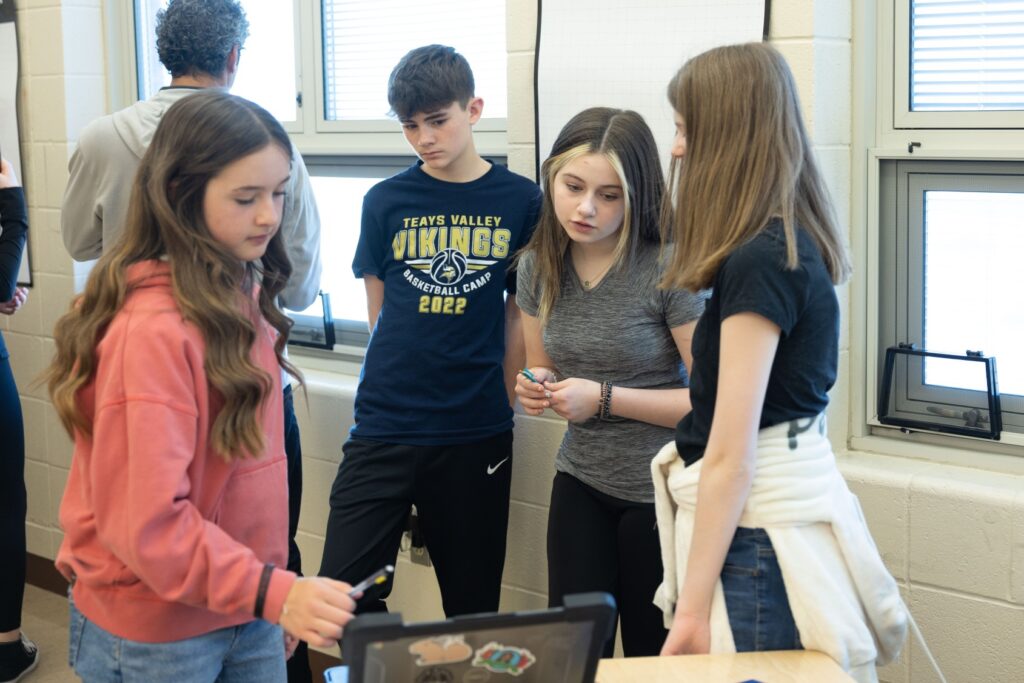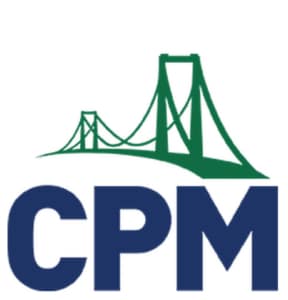
September 2023
It is the last class of a hot day in May. The room smells of teenagers who had PE today. Students are working on a problem, a lab, or a project. You circulate, checking in with kids — encouraging them, laughing with them, reminding them of a strategy they have learned. There is a hum in the room as kids share their thinking with each other and celebrate as they achieve their goals. And you realize that the reason that a class like this happens is the many days and months of purposeful actions that you put in, starting on day 1.
We are fortunate colleagues, collaborating to solve challenges. Through our collective middle school teaching experience, we have learned (the hard the way) that:
- Students thrive when they believe you care.
- Students excel when they are willing to work hard.
Here, we offer insights and advice that have helped us engage our 6th-grade classes, capturing hearts before minds.
Continually consider student belonging.
Our identity as teachers is making spaces and experiences where kids say, “I belong here. I can be successful here. My teacher cares about me.”
As we plan our first week of school, we prioritize opportunities for students to share information about themselves with us and their classmates. We listen and make notes. We notice who wants to take over a team and who is okay with letting that happen. We notice who brings out the best in others. We engineer opportunities to switch power dynamics to bring out more voices, more possible solutions, and more strategies.
In math, Jocelyn uses the Chapter 1 lessons to establish team roles and classroom community. This requires her to continually ask herself, “How were my students empowered to make sense of and solve today’s challenges? Did I provide opportunities for students to bring their authentic selves into the classroom? How did I show them that I care about them and want them to learn?
Jen thinks about creating science experiences that allow all students to access the material and feel successful. Students should be challenged, but not before students see themselves as people who can do science and are part of the classroom community. When they recognize that what they bring to the (lab) table is valued and important, the motivation to do their best thinking will follow.
Use content to build classroom culture, but prioritize the culture you want.
Our classroom culture is inseparable from the tasks we choose and how we have students engage in them. A great scientific question, broken into steps to investigate it, is not scientific inquiry. Two weeks of great icebreakers and team builders, followed by a month of worksheets, is not a collaborative classroom.
We use our content to build our culture. We prioritize rich tasks that require the thinking habits we will use all year: collaboration, investigation, rough-draft thinking, and revision. We teach into the importance of these habits — making sure that students understand that the process IS the product. We love the idea of positive interdependence, that my contributions benefit you, and your contributions benefit me. In Chapter 1, the tile patterns and other tasks start conversations that build classroom culture. Students get to know how their teammates think and approach problems. This is also a time to learn what background knowledge students bring to this school year. Students will re-activate last year’s knowledge and skills. They might learn a new concept in Chapter 1, but our primary goal is to establish relationships that will support students through challenging content. For the first few weeks of school, success is not checking off a standard. Success is being a learner.
Get to know individual students but also the class personality.
The relationships we form with some students will be what sustains us through the inevitable challenges the school year will hold. We also know we have A LOT of students. We get to know the class’s personality while we are getting to know the individual students. Thinking about the distinct personalities of each class period makes us better at teaching the individuals in any one of the classes.
Getting to know the individuals in our classes takes time and patience. One of the most powerful ways to do this is also the simplest: spending a few minutes chatting with individuals and teams at the start and end of each class period. Low-stake conversations about topics that everyone can participate in work best. Let students know you listen and remember what they say.
Think carefully about your own relationship with struggle.
For the first part of her career, Jocelyn thought supporting students meant giving great explanations and lots of tips. She really did not want her students to struggle. She wanted to save the day and help them the moment it got tough. Later, she learned that she was actually reinforcing passivity, and her students were capable of so much more than what she was letting them do. A learning experience is memorable when students have the opportunity to persevere. The struggle on the journey to understanding is just as important as performing a skill. Once Jocelyn learned this, she shifted to setting up challenges that required perseverance, without teetering into frustration.
How much do you want your students to struggle? What would you want that struggle to look like, sound like, and feel like? What will you do to make struggle feel like productive, hard work, rather than frustration? It is worth discussing this with students, co-teachers, paraprofessionals, and parents.
Be vulnerable and open about your weaknesses and what you are working on.
Adolescents are works in progress. We let them know that we, too, are unfinished and sometimes messy. Every Mansfield Middle student knows Jen cannot keep her shoes tied. They also know Jocelyn did not feel like she was good at math when she was a kid, even though she got excellent grades and looked very successful. And they very kindly, and patiently, tell her that her pencil is in her ponytail when she cannot find it. We let kids know that we are not perfect and we do not expect them to be perfect either.
Our goal at the end of the first day is never to have passed out the books or reviewed all of the rules. Our goal is to show our students that math and science are active, interesting, and puzzling. We want them to know that we are interested in them as people and as learners. We want them to want to work hard. We want them to feel that this is going to be a really good year.

Jen O’Brien & Jocelyn Dunnack
Jen O’Brien Mansfield, CT, obrienj@mansfieldct.org
Jocelyn Dunnack, Mansfield, CT, jocelyndunnack@cpm.org

